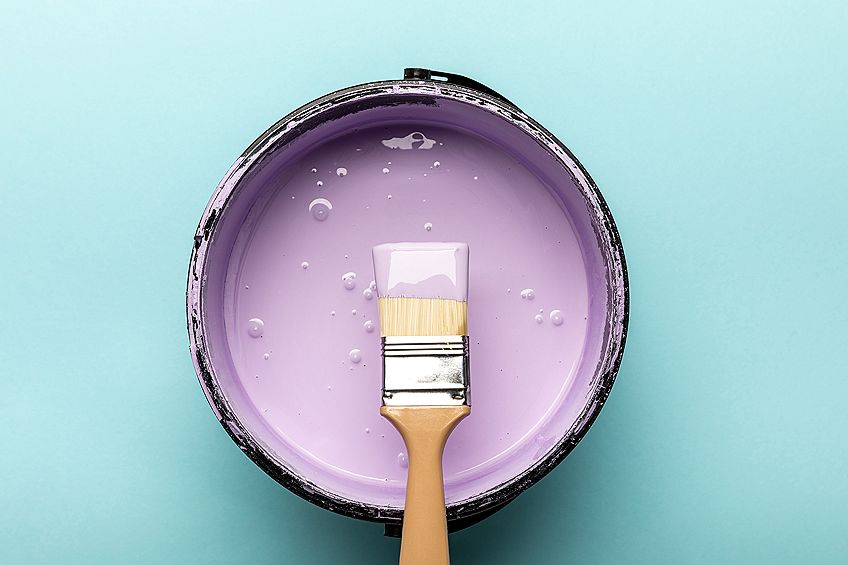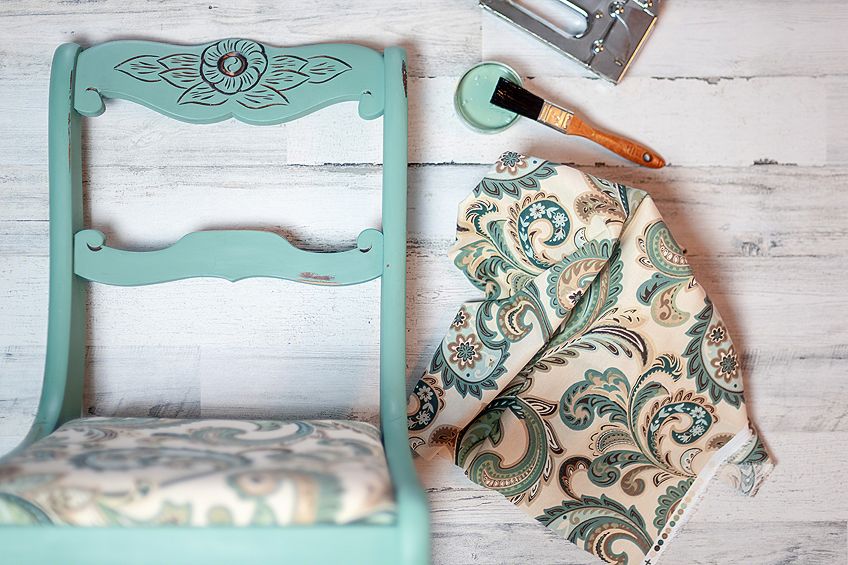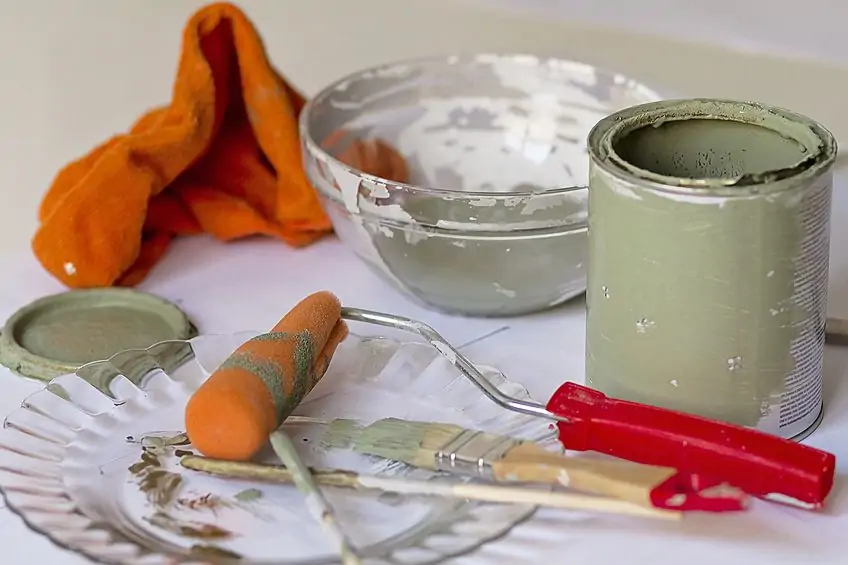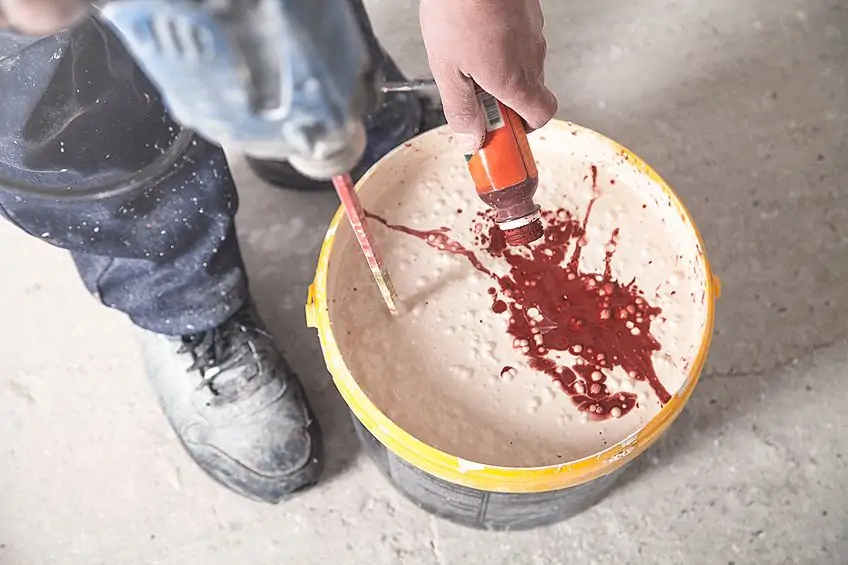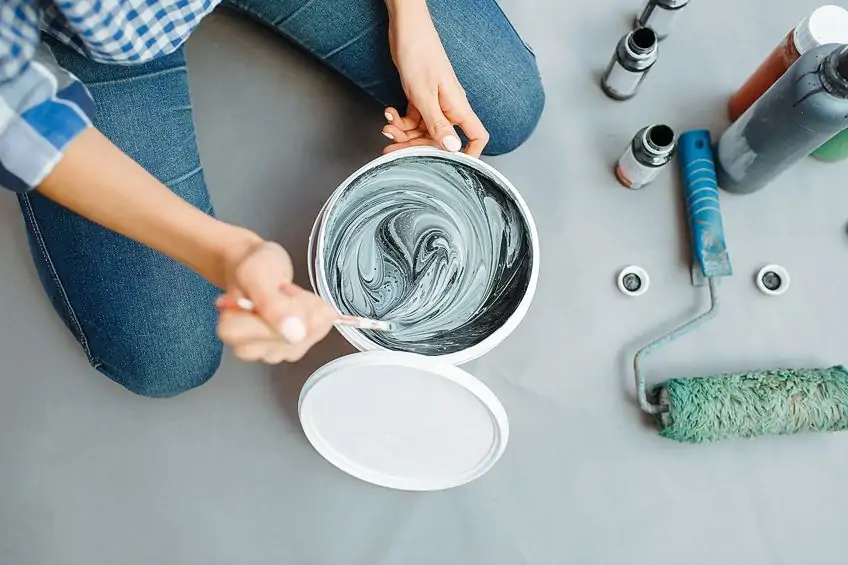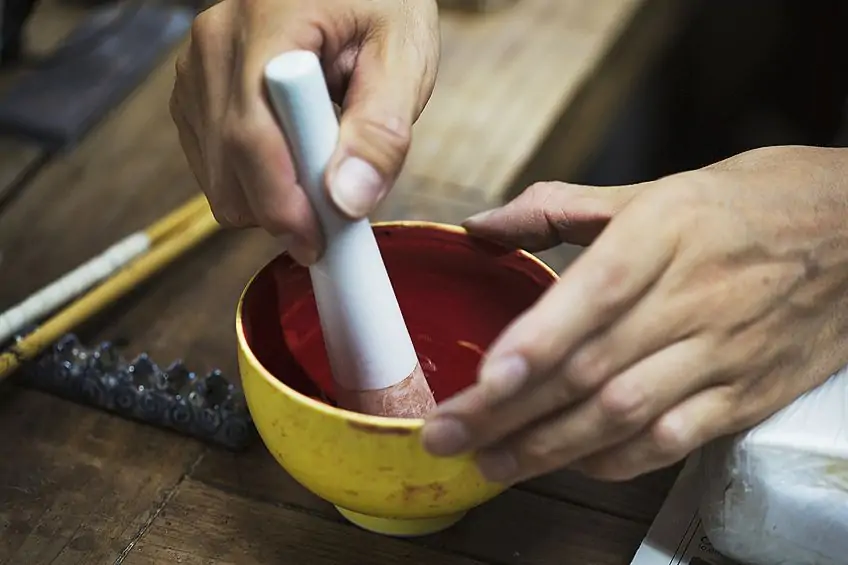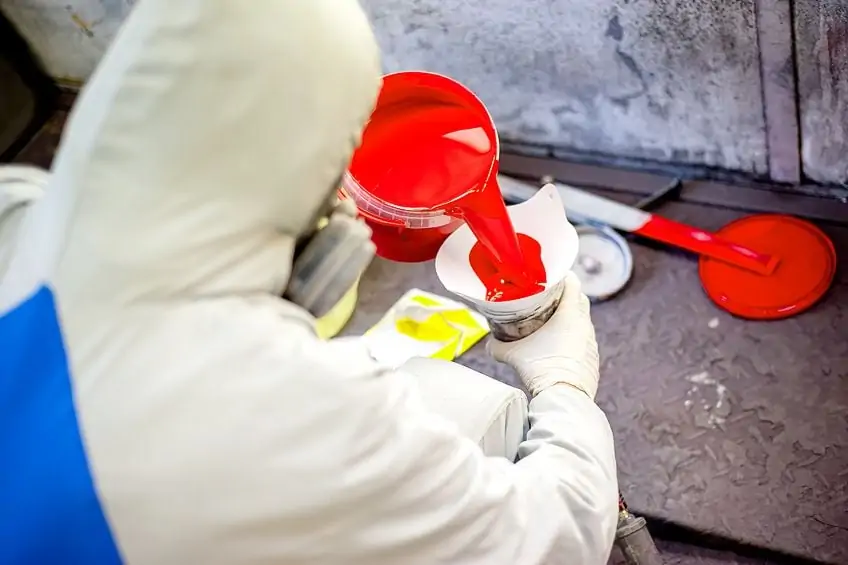How to Make Chalk Paint – Best Recipes and Guide
This post may contain affiliate links. We may earn a small commission from purchases made through them, at no additional cost to you. You help to support resin-expert.com
Using chalk paint is hands-down one of the most popular ways of doing up boring furniture, and it does so, paradoxically, by making the surface you are painting look old. In this article, we will show you just how easy it is to achieve that weathered, distressed look on your furniture without compromising your budget by buying ready-made store-bought paint. We also will show you how to make the paint yourself at an affordable cost.
Table of Contents
Key Takeaways
Our expert summary about making your own chalk paint:
- Chalk paint can easily be made at home.
- It’s much cheaper to make your own chalk paint.
- There are at least 4 easy recipes you can often make with materials you have at home.
- Your self-made chalk paint cannot be stored as long as your bought chalk paints.
What Is Chalk Paint?
Chalk paint is thicker than regular paint due to the inclusion of a thickening agent, such as calcium carbonate. Not to be confused with chalkboard paint, it is used to produce the “distressed” or antique effect you might find on older pieces of furniture, while chalkboard paint creates a surface you can write on with chalk in your living or working space.
Annie Sloan was the original inventor of chalk paint, which arose out of her need for a paint that could be applied quickly while being equally versatile. It came into being in the 1990s and has since become a widely used solution in decorative arts and interior design for precisely those reasons.
Chalk paint sticks to several different surface types and is usually more expensive than ordinary paint. But the great news for curious arts and crafts enthusiasts and homeowners looking for cheap and classy ways to enhance their homes is that making your own chalk paint is much more affordable than store-bought paint, and it is very fun and easy to make!
Anyone with a smidgen of experience in DIY projects for the home will attest to the fact that chalk paint is a super-versatile paint that works on many surfaces. It is very often used on wooden surfaces to create an “aged” effect by sanding the paint once it is properly dry. The other major appeal of this product is that minimal effort is required in preparing your surface before painting it, although if the surface has a rough texture, then sanding it before you paint it can help to make the paint stick better to the prepared surface.
How to Make Chalk Paint
Making your own chalk paint is not rocket science and it will only take a few minutes to mix all the ingredients needed to produce long-lasting, highly durable paint. All you need is latex paint, a thickening agent, and possibly water, depending on which thickening agent you choose to add to the paint.
Best Chalk Paint Recipes
Ask around and you will find that the question of which paint recipe for chalk paint is best is contentious. Like any fail-proof DIY approach to arts and crafts, a good, healthy balance between doing the appropriate research and testing the theory on a more practical level is necessary for the making of a DIY master, who can achieve the same quality paint as those available in your local hardware store, if not better.
Preferred methods for making this paint vary, depending on who you ask. In the following four recipes, we will give you the basic steps you need to take to produce the paint of your desired consistency and texture. Like any homemade solution, the best approach is to try a few different methods for yourself and pick your best chalk paint recipe based on your own experience rather than word-of-mouth.
Bear in mind that, as you read the following recipes, you may have to adjust the quantities slightly to achieve your preferred consistency.
Chalk Paint with Calcium Carbonate
This recipe simply requires mixing one part latex paint with 2-3 parts calcium carbonate (chalk). One of the biggest challenges you will face when using this method is sourcing calcium carbonate, but you should be able to buy it online in the form of calcium carbonate powder. Aside from this setback, calcium carbonate is the perfect addition to latex paint for the following reasons: It provides a chalky finish, lasts for a couple of days if appropriately sealed, has a great consistency, and is quick drying. What more could you ask for when making your DIY chalk paint?
It is suggested that you include talc in your recipe in order to prevent cracking and improve adhesion. The ingredients in this recipe are:
- 1 cup latex or acrylic paint
- 2-3 tbsp calcium carbonate (chalk)
- 1 tbsp talc
- 1-2 tbsp of water
- Measure Ingredients:
- Measure out the paint: Start with 1 cup of latex or acrylic paint. Adjust the quantity based on your project size.
- Measure out the calcium carbonate: Use 2-3 tablespoons of calcium carbonate for every cup of paint. You can adjust this ratio based on your preferences for texture and coverage.
- Mix Calcium Carbonate with Water:
- In a separate container, add the measured calcium carbonate.
- Gradually add a small amount of water (about 1-2 tablespoons) to the calcium carbonate while stirring vigorously. Continue adding water and stirring until you have a smooth, lump-free paste. This is your calcium carbonate paste.
- Combine Paint and Calcium Carbonate Paste:
- Pour the measured paint into a mixing bowl.
- Gradually add the calcium carbonate paste into the paint while stirring continuously. Ensure that the two are thoroughly mixed together.
- Adjust Consistency (if necessary):
- Depending on your preference and the thickness of your paint, you can add a bit more water to thin it out or more calcium carbonate to thicken it up. Adjust until you achieve the desired consistency.
Chalk Paint with Plaster of Paris
The method for using plaster of Paris as a thickening agent is similar to the previous method. First, mix three parts paint with one part plaster of Paris until smooth. Then simply add water to attain your desired consistency.
- Measure Ingredients:
- Measure out the paint: Start with 1 cup of latex or acrylic paint. You can adjust the quantity depending on how much chalk paint you want to make.
- Measure out the Plaster of Paris: Use 2 tablespoons of Plaster of Paris for every cup of paint. You can increase or decrease this ratio depending on your preferences, but this is a good starting point.
- Mix Plaster of Paris with Water:
- In a separate container, add 2 tablespoons of Plaster of Paris.
- Gradually add 2 tablespoons of water to the Plaster of Paris while stirring vigorously. Continue stirring until you have a smooth, lump-free mixture. This is your Plaster of Paris paste.
- Combine Paint and Plaster of Paris Paste:
- Pour the measured paint into a mixing bowl.
- Gradually add the Plaster of Paris paste into the paint while stirring continuously. Make sure the two are thoroughly mixed together.
- Adjust Consistency (if necessary):
- Depending on your preference and the thickness of your paint, you can add a bit more water to thin it out or more Plaster of Paris to thicken it up. Adjust until you achieve the desired consistency.
Chalk Paint with Baking Soda
Although the ratios involved in this method are different from those described above, the method to follow with this recipe is the same as the calcium carbonate method:
- Measure Ingredients:
- Measure out the paint: Start with 1 cup of latex or acrylic paint. Adjust the quantity based on your project size.
- Measure out the baking soda: Use 2-3 tablespoons of baking soda for every cup of paint. This can be adjusted depending on how much texture you want in your chalk paint.
- Mix Baking Soda with Water:
- In a separate container, add the measured baking soda.
- Gradually add 2-3 tablespoons of water to the baking soda while stirring vigorously. Continue stirring until you have a smooth, paste-like mixture. This is your baking soda paste.
- Combine Paint and Baking Soda Paste:
- Pour the measured paint into a mixing bowl.
- Gradually add the baking soda paste into the paint while stirring continuously. Make sure the two are thoroughly mixed together.
- Adjust Consistency (if necessary):
- Depending on your preference and the thickness of your paint, you can add a bit more water to thin it out or more baking soda to thicken it up. Adjust until you achieve the desired consistency.
Chalk Paint with Un-Sanded Grout
This is the final method that is commonly used to produce chalk paint. The ratio for this mixture is one cup of paint to two cups of un-sanded grout, which you should mix until smooth. Grout has an unappealing odor and also has the unattractive quality of hardening too fast – so fast that you may find your paint thickening while you are using it. This means that you will have to spend extra time and energy mixing it up to prevent it from hardening while using it.
- Measure Ingredients:
- Measure out the paint: Start with 1 cup of latex or acrylic paint. Adjust the quantity based on your project size.
- Measure out the unsanded grout: Use 1-2 tablespoons of unsanded grout for every cup of paint. You can adjust this ratio based on the texture you desire.
- Mix Unpainted Unsanded Grout with Water:
- In a separate container, add the measured unsanded grout.
- Gradually add a small amount of water (about 1-2 tablespoons) to the unsanded grout while stirring vigorously. Continue adding water and stirring until you have a smooth, lump-free mixture. This is your unsanded grout paste.
- Combine Paint and Unsanded Grout Paste:
- Pour the measured paint into a mixing bowl.
- Gradually add the unsanded grout paste into the paint while stirring continuously. Make sure the two are thoroughly mixed together.
- Adjust Consistency (if necessary):
- Depending on your preference and the thickness of your paint, you can add a bit more water to thin it out or more unsanded grout to thicken it up. Adjust until you achieve the desired consistency.
For these reasons, this is listed as the chalk paint recipe that we least recommend, and we suggest trying all the other recommended methods before you attempt this one.
General Tips on How to Make Chalk Paint
If you make larger quantities of paint, grout and plaster of Paris tend to harden quite quickly. What this means in practice is that if you plan on storing paint for later use, it is best to go with calcium carbonate if you want to avoid wastage.
When choosing the paint you want to add to your mixture to add color, remember that the latex paint will lighten the color. Thus, we recommend that you choose a darker color than you intend to paint with.
Always cover your working area or your art studio at home when making your own chalk paint
How to Use your selfmade Chalk Paint
Once you have made your chalk paint using one of the recipes described above, you are ready to apply your paint to your surface. Here are a few tips to help you achieve the look you want using your chalk paint:
- Apply thin coats of paint to minimize drying time.
- Lightly sand (with 100-grit sandpaper) the surface to achieve distressed edges. Wait until the paint has dried completely before sanding.
- Dust the surface to remove excess particles.
- Apply wax to the entire area for a protective finish and buff to achieve a shine.
Why Make Your Own?
There is no denying it – chalk paint can be quite expensive, making affordability the number one reason to make your paint at home. But it is not only the cheaper cost that makes this homemade option the preferable choice.
When you take the DIY route, you have a wider spectrum of colors that would be available than compared to ready-made chalk paint.
While chalk paint bought in a store will only have a select few colors, you can add any color latex paint to your chalk paint mix that your heart desires. You will also have more control over the consistency of your paint so you will be able to make it as thin or as thick as you like; you can adjust the fluidity of your paint to suit your current project. Your chosen chalk paint recipe can, therefore, easily be modified to be suitable for putting into spray cans instead of being applied by using a brush.
Another advantage to using homemade paint is that it can potentially be more durable than the ready-made paint you can buy in the store. And, finally, depending on the recipe you use and the ratio of ingredients, your homemade paint may dry faster than store-bought brands. So, you can see for yourself that there are many good reasons as to why DIY chalk paint is the ideal choice.
Since the 1990s, chalk paint has been an extremely popular method of jazzing up furniture to look, well, old. A modern-day technique of bringing back that ancient look without actually paying a pretty penny for antique items in a furniture store, chalk paint can be made at home with a few basic ingredients in a no-mess, no-fuss kind of way that keeps you smiling throughout the process.
Frequently Asked Questions
What Are the Ingredients in Chalk Paint?
Chalk paint usually has latex paint as a base, and then some form of thickening agent that could be calcium carbonate (chalk), plaster of Paris, or grout, for example. Bicarbonate of soda is also sometimes used.
Is Homemade Chalk Paint as Good as Store-Bought?
Many people would argue that DIY chalk paint is more durable than paint you might find at the store, but it depends on the chalk paint recipe you use and the brand that you buy. Many people opt for making their paint because it is much cheaper.
What Are the Pros and Cons of Chalk Paint?
The main benefit of chalk paint is that it provides a medium that can help you to achieve a distressed effect when sanded, which is much harder to achieve with regular paint if it is at all possible. This is because the chalk paint is thicker. This type of paint has good adhesive properties and will stick well onto a range of surfaces, with minimal surface preparation. On the downside, chalk paint is often noticeably more costly than regular paint. You can get around this by making your own though, which can be considerably cheaper than store-bought options. It is very easy to make your chalk paint.
What Is Chalk Paint and Why Use it?
Chalk paint is a special type of paint that allows you to create an antique finish on your surfaces and furniture. It has a base of latex paint but has a thickening agent as an additional element, that allows for the creation of a “distressed” look if sanded. Chalk paint should not be mistaken for chalkboard paint.
What Is the Difference Between Chalk Paint and Regular Paint?
What makes chalk paint different from ordinary paint (such as acrylic or latex paint) is that it is much thicker because it contains an additive that changes the consistency of the paint. If you make your own chalk paint using the best chalk paint recipe you can find and adapting it to suit your own needs, you can choose the consistency of the paint, while still achieving the antique look on the item you are painting.


